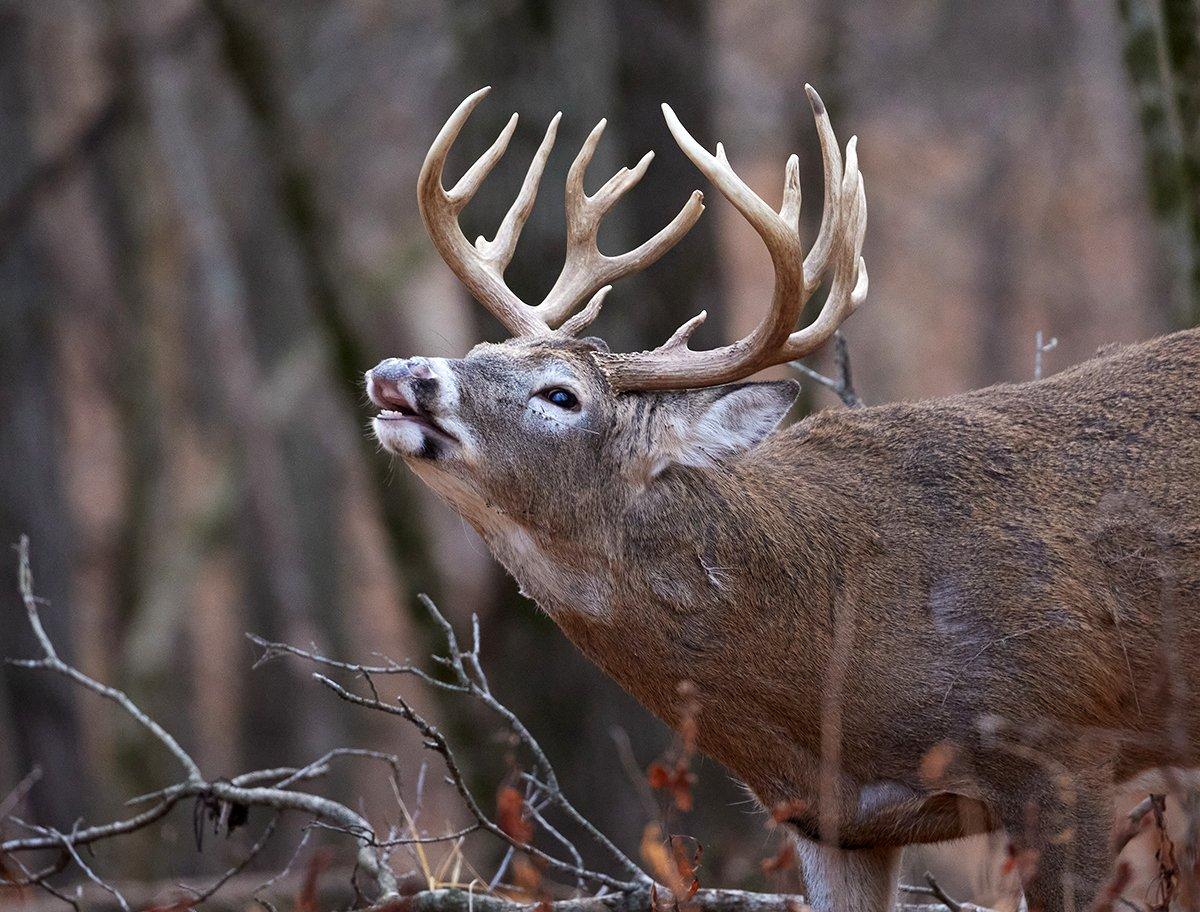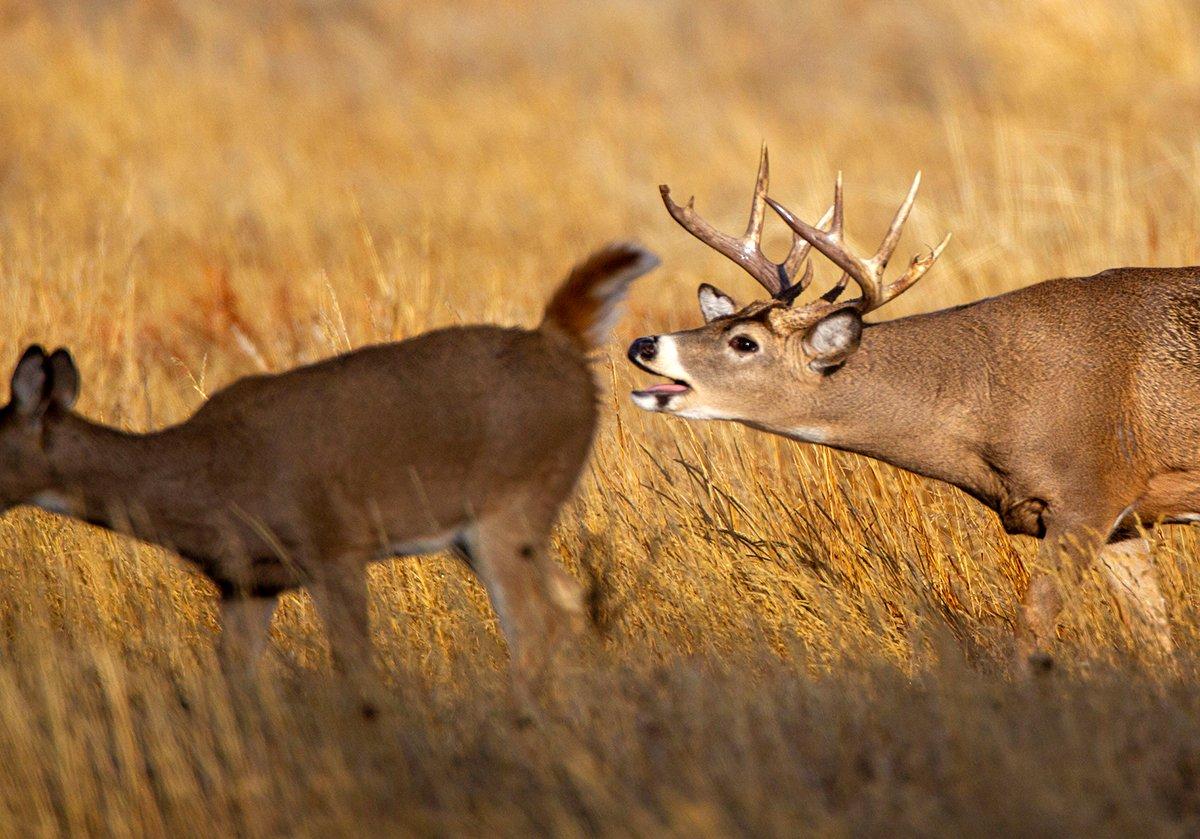Adapting your tactics to match each distinct part of the rut
A doe comes crashing through the timber and blows right by your treestand. Seconds later, a top-heavy, big-bodied buck trots down the same lane, hot on the doe's trail. It stops mere yards from you, lip-curls, and belts out the gnarliest grunt you've ever heard.
That's what the rut is all about. And this is how you should hunt each phase of it.
Pre-Rut
Time Period: October 10-22
Some people refer to the period from opening day until mid-October as the pre-rut. I don't. Opening day until around October 10 is the early season. The middle of October is the pre-rut.
This is a period when deer have transitioned from their early season patterns to their fall ranges. This shift can occur anytime between mid-September and mid-October, but it usually always happens by October 10, which is generally when I begin implementing pre-rut hunting tactics.
Focal Point: If you're on a monster buck, move in now. There's no telling where he'll be in the next few phases.
During this phase, bucks are beginning to lay down quite a bit of sign. Rubs and scrapes are popping up across the landscape, and deer activity is increasing. Forget about the October lull. It's not real. In fact, it's the biggest misinterpretation in all of deer hunting. Most hunters are still hunting open areas and ag fields. Deer aren't hitting those spots like they were. For one, many deer have transitioned to their fall range. Secondly, hunting pressure has moved deer to areas where they feel safer. Last, food sources are changing. Now, deer are hitting mast crops, such as acorns. And this year there is no short supply, resulting in far fewer sightings for those who aren't hunting close to the oaks.
My preferred plan of action for this period is to find where the bucks are bedding and get between their beds and the best acorn crop — or whatever the preferred food source is — available. That's the best shot at killing one.
Don't put too much stock into rut sign yet other than allowing it to serve as confirmation that there are bucks in the area. Also, avoid morning hunts during this phase. Evening sits are where it's at.
(Don't Miss: How to Read Rub Lines)
Seeking Phase
Time Period: October 23 to November 1
This phase is when bucks begin to act a little rutty. It generally occurs during the last seven to 10 days in October, and can last into early November, depending on specific locations. Rut sign is really ramping up now, and testosterone levels are getting deer up on their feet a little earlier in the day. Mature bucks are now frequently seen walking in daylight. You might see some young bucks chasing, but don't expect the big boys to. That's still a week or more out.
Focal Point: Bucks' testosterone levels are rising. Use some aggressive calling and rattling to tick them off and lure them in.
As for tactics, I'm still keying on buck bedding areas during this phase. However, rut sign is becoming a little more important now. Odds still aren't good of killing a buck over a scrape (they never are — most scraping activity is done at night), but if you find several scrapes and a rub line really close to a known bedding area, get between it and the buck's bedroom on morning hunts. Continue to focus on bed-to-feed patterns for afternoon sits.
During this phase, begin hunting mornings and evenings from now through the post-rut. Calling and rattling tactics can work, but I'd hold out until the latter half of this phase to really get loud with them.
(Don't Miss: The Best Times to Deer Hunt in 2022)
Chasing Phase
Time Period: November 2-10
Now the bucks are feeling their oats. This is the phase that we all love. It's what we deer hunters identify as the rut, even though actual breeding likely won't occur for a few more days. Bucks — even mature ones — are seen chasing does now.
Focal Point: Really get aggressive with the calling. Also, consider hunting the downwind sides of doe bedding, and other areas of thick cover where deer might be.
My preferred tactical approach is to set up along trails — 20 to 30 yards from the field edges — that run parallel to open areas and food sources. Bucks will travel along these as they scent check for estrus does. Also, in hill country, set up along leeward (downwind side) ridges. Bucks will travel along the top of them (just down from the crest — they don't like to be skylined) in search of that first estrus doe. Lastly, continuing to focus on quality food sources is also a good idea. Focusing on doe bedding areas isn't a bad idea either.
This is the phase when I get aggressive with calling and rattling. Also, use a decoy during this phase. Bucks' testosterone levels are peaking and they sometimes can't turn down a fight.
(Don't Miss: 5 Best Stand Setups for Pre-Rut Bowhunting)
Tending Phase
Time Period: November 11-20
This is what some people refer to as the lock-down phase. It's the period where the majority of does are being bred and bucks are hanging with them in thick cover. It can be a tough period to hunt, for sure. But it isn't impossible. I filmed my father kill a buck last year right in the middle of the lock-down phase. The buck was bedded with a doe. It stood up around midday and Dad took the shot.
For this phase, you have to get in the bedroom. It's going to be hard to get on bucks if you don't go where they are. Because of this, I like to set up in the fringes of doe bedding areas.
Focal Point. This is the peak rut, bucks are locked onto does, and it's a difficult time to see mature deer. If traditional rut stands aren't producing, move into the fringes of buck bedding, doe bedding, and weird spots bucks might push does to.
Another tactic that I use during this phase is setting up in funnels, such as pinch-points, saddles, etc. Bucks often travel through these areas of least resistance as they search for the next estrus doe. Oftentimes, bucks will finish breeding a doe during this phase and travel through these locations as they search for another one.
As was during the previous phase, aggressive calling and decoying tactics work great for this phase. Bucks are still fired up and ready to go. So taking advantage of their testosterone and provoking them offers good odds.
(Don't Miss: 10 More Deer Hunting Myths Debunked)
Post-Rut
Time Period: November 21-30
Some people refer to everything after the peak rut as the post-rut. I don't. Instead, I dub around November 21 until the end of the month as the post-rut. Then comes the second rut window during the first half of December. And everything after that is the late season.
Most of the does are bred by now. But there are some does that will enter estrus during the last few days of November. But things are changing.
Focal Point: Most of the rut activity is over. However, mature bucks with some gas left in the tank are still searching. So, keep after them.
Deer have been pressured hard by now. In most states, at this point, even the gun hunters have had a crack at them. Simply put, bucks are reacting to the human invasion.
Because of this, I generally use more reserved tactics for this phase than I did during the previous two. Now, I ease back into the best security cover I can find — that I think bucks are now bedding in — and wait for them to slip up. You can still hunt the traditional rut stands — parallel trails, funnels, food sources, etc. — like you were before. But most of the truly mature bucks will have responded to hunting pressure by now, meaning you'll have to focus more on thick cover similar to the way you did in late October.
(Don't Miss: 25 Tips for New Deer Hunters)
Second Rut
Time Period: December 1-15
Now the hunting is getting pretty tough. Most all of the does are bred now. Bucks are more worried about filling their guts than they are chasing women. It's getting pretty hard to catch a careless buck on its feet. However, the second rut is near, and that means bucks making mistakes once again.
During this phase, mature does that were not bred during the first rut will cycle through 28 days after their first cycle. Also, doe fawns that reach the weight requirement to become sexually mature will also enter estrus. For doe fawns, that could happen at any time during the late season if adequate food sources are available.
Focal Point: For northern deer hunters, the rut is largely over with. Focus on food, and take any rutting activity as a bonus.
Obviously, bucks will most likely find these does near food sources. And if you have an estrus doe fawn near you, things could get interesting. Bucks will follow those does wherever they go. Unlike older does, doe fawns without much experience generally stay out in the open. This gives you a better shot at seeing that mature buck in daylight.
As for tactics, focus on bed-to-feed buck patterns for the most part. But don't be afraid to focus on bed-to-feed doe patterns, either. Because as mentioned, it is possible to catch a buck dogging one of those last estrus does of the season.
(Don't Miss: 30 Reasons You Won't Get Your Target Buck This Fall)
Editor's Note: Originally published on October 28, 2016.










